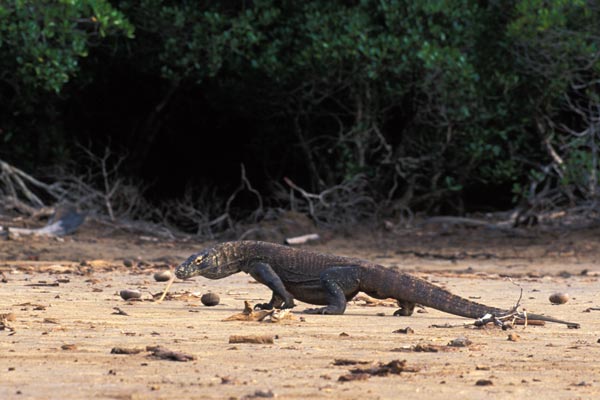
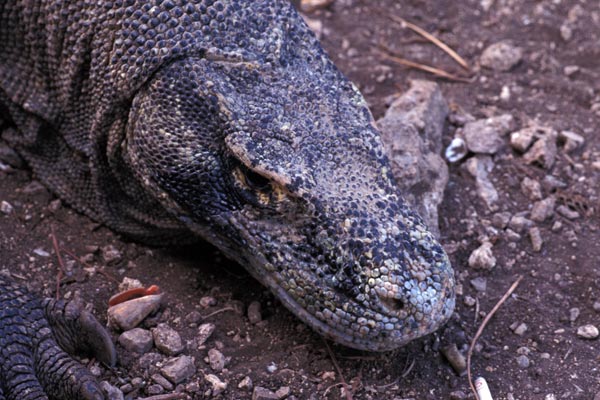
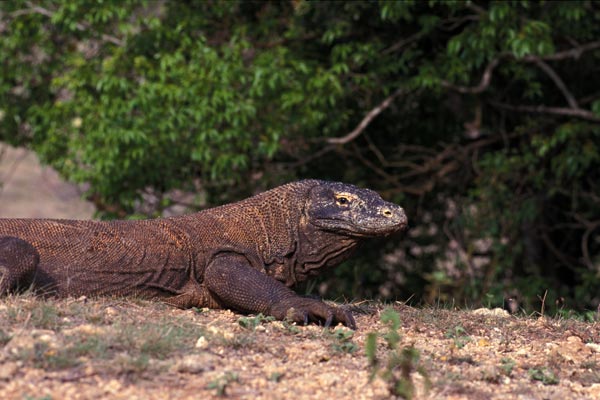
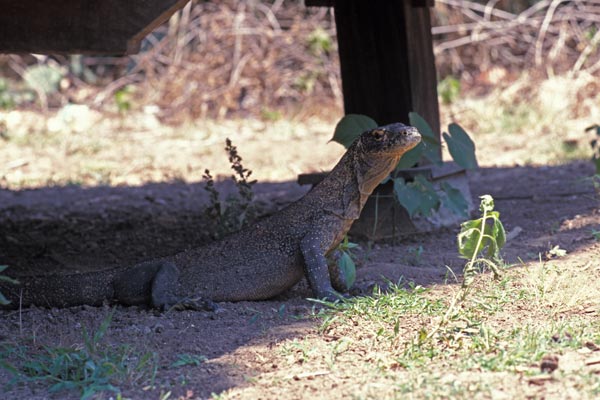
The third one here is a young adult; big enough to live on the ground. (Until the age of two or so they live primarily in the trees, thus avoiding being eaten by the larger ones.) The younger ones we saw were considerably more active than the huge ones; they were generally wandering about tasting the scent of the air constantly with their long forked tongues. This one took a brief rest under one of the ranger station buildings to cool off.
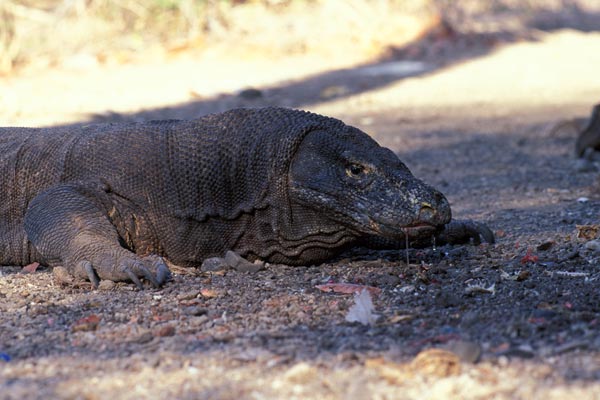
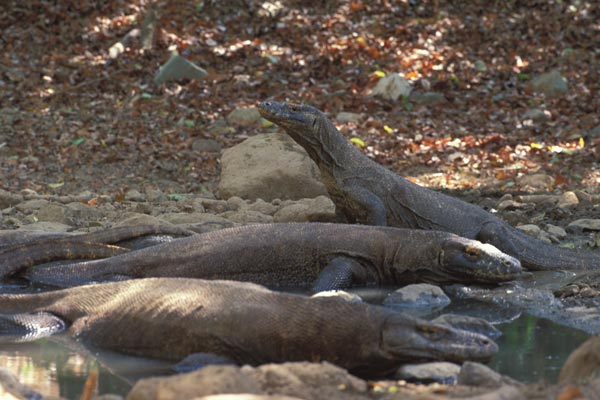
In the years since we visited, some researchers have come to a different conclusion: that Komodo dragons actually have venom that helps prevent the blood from clotting, among other effects. This, combined with the large open wounds inflicted by tearing with sharp teeth, causes the prey animals to weaken and bleed to death. I think there is still some controversy about this bacteria-vs-venom issue, but from my amateur point of view it looks like the venom theory is now more generally accepted.
The rangers used to throw dead goats out so tourists could watch a giant lizard feeding frenzy. Eventually people realized that the lizards were becoming dependent on this sort of handout, which is a bad thing. So they stopped the goat-tossing but were worried that travellers would stop visiting dragon-land if it was hard to find dragons. To try to avoid this dreary possibility, they built some concrete watering holes near the old feeding site. The watering holes are supposed to keep the prey animals around (deer, wild pigs, water buffalo, etc.). This may be true, but when we were there it just provided a nice place for several dragons to cool off from the tropical heat, and take the occasional swig. So this picture looks like it was taken in a zoo, but these are indeed actual wild lizards free to come and go as they please.
- Auffenberg, W. 1981. The Behavioral Ecology of the Komodo Monitor
- Auffenberg, W. 1980. The Herpetofauna of Komodo, with Notes on Adjacent Areas
Bulletin of the Florida State Museum Biological Sciences Volume 25 Number 2 - Ellis, C. 1998. The Land of the Komodo Dragon
- Lutz, D., Lutz, J. M. 1997. Komodo: The Living Dragon (Revised Edition)
- Pianka, E. R., King, D. R., King, R. A. 2004. Varanoid Lizards of the World